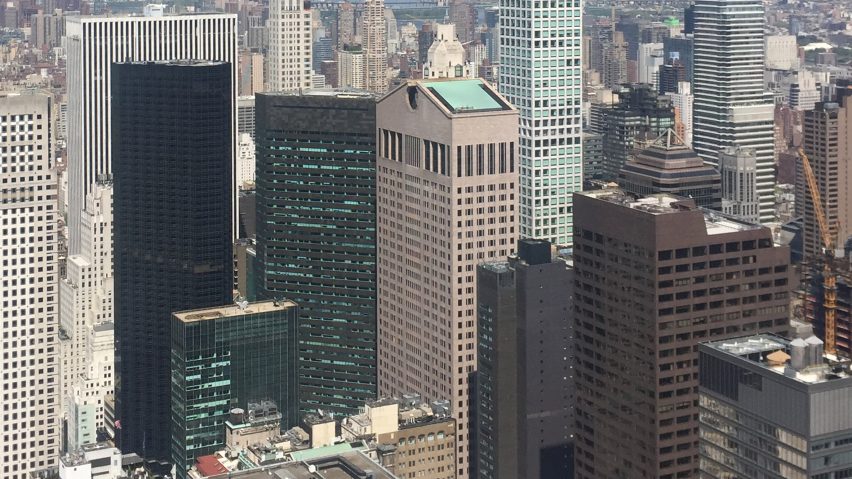Philip Johnson's postmodern AT&T Building has been awarded landmark status, halting Snøhetta's controversial renovation plans for the Midtown Manhattan skyscraper.
New York's Landmarks Preservation Commission (LPC) announced yesterday, 31 July 2018, that it has granted landmark status to the tower, also known as 550 Madison.
The designation protects the exterior of the reddish-toned stone building, preventing the Oslo and New York-based architecture firm's controversial proposal to replace part of its base with glass. Snøhetta is now revising its scheme to update the vacant building's public, retail and office spaces, and any changes intended for the exterior will require an LPC review and an LPC permit.
"The team has stepped away from the design in renderings that were made public in October 2017," said a statement sent to Dezeen on behalf of the firm.
"In anticipation of the landmark designation for the exterior, the team has been preparing plans for the building that strike a balance, respecting 550 Madison's importance, while addressing the challenges to making it a multi-tenant office building with high quality public space."
AT&T landmarking is "an astonishing and marvelous victory"
The move to landmark the building commenced last year, shortly after Snøhetta revealed its controversial scheme and triggered an outcry from the architecture industry. Architects Norman Foster and Robert A M Stern, and critics including Olly Wainwright, Alice Rawsthorn, Alan G Brake and Alexandra Lange, were among those who backed the campaign to protect the building.
Filmmaker Nathan Eddy, who organised a petition and protest in November 2017 – a week after Snøhetta's plans were revealed – described the news as "an astonishing and marvelous victory".
"Landmarking any building against the wishes of almighty developers in New York City is almost impossible these days," Eddy told Dezeen.
"I look at it this way: $200 in poster supplies and two days of intensive hand-lettering built a movement so passionate that we swept the building into landmark status in less than a year."
Decision could mark major step in conserving postmodern architecture
Completed in 1984, the 34-storey tower was designed by Johnson and partner John Burgee for American communications giant AT&T, featuring a number of ornamental flourishes like the "Chippendale" roof line, and brass and marble finishes inside.
Today, it is celebrated as the first skyscraper built in the postmodern architecture style, which emerged in the late 1970s as an ideological reaction against the utopian ideals of modernism. The landmarking recognises the importance of this era of design.
"This is the building that established postmodernism as a legitimate architectural movement," said LPC's Frederick Bland in a statement. "It deserves to be preserved for future generations."
It could also mark a major step in recognising other works built in the controversial style. Many examples of postmodern buildings have been threatened with demolition in recent years. Others in the US include Helmut Jahn's James R Thompson Center in Chicago, which Eddy also campaigned to save by creating a movie about the government building.
Speaking to Dezeen last year, Foster commented that although he didn't particularly like "cartoonish" postmodernism, some buildings in the style – like Johnson's AT&T – are worth saving.

